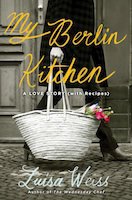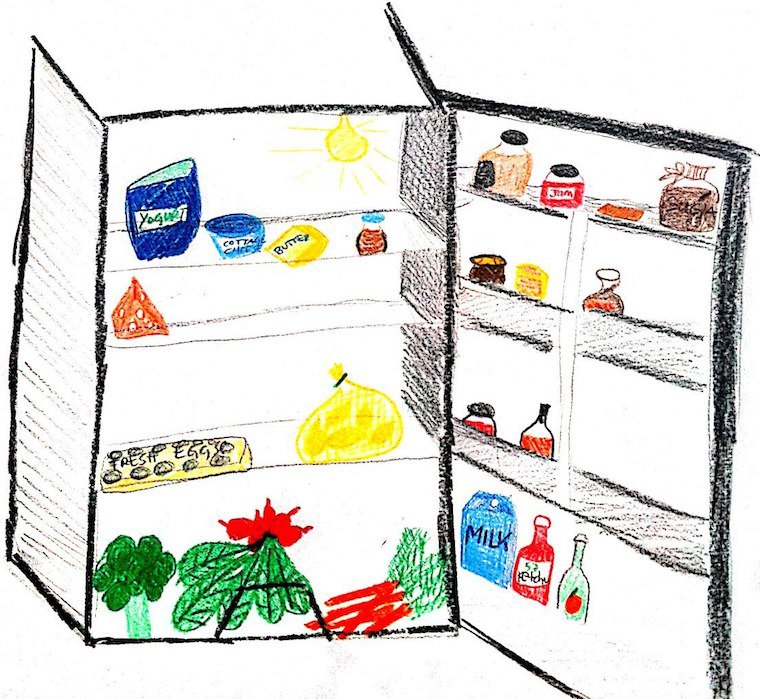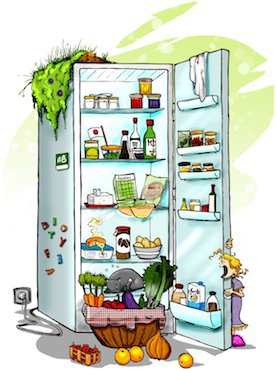For this new installment of our Draw Me A Fridge series (read about it here), Alexia spoke with Luisa Weiss.
 Luisa Weiss blogs at The Wednesday Chef and is the author of the best-selling food memoir My Berlin Kitchen, which was published last September by Viking. She’s half American, half Italian and was born in Berlin. She moved back to her birth city three years ago, after spending a decade in New York. She now lives in Berlin with her husband Max and their 10-month-old son Hugo.
Luisa Weiss blogs at The Wednesday Chef and is the author of the best-selling food memoir My Berlin Kitchen, which was published last September by Viking. She’s half American, half Italian and was born in Berlin. She moved back to her birth city three years ago, after spending a decade in New York. She now lives in Berlin with her husband Max and their 10-month-old son Hugo.
Fridge: Dijon mustard, a wedge of Parmesan, ketchup, at least two jars of jam at any given time, maple syrup, yogurt (whole milk for my son, lowfat for me), brown sugar (to stay moist!), unsalted butter, a tube of tomato paste, eggs (dinner’s always possible with eggs in the house), Sicilian colatura [a salted anchovy sauce] leftover from recipe testing my book, a jar of Better Than Bouillon stock base and a box of baking soda (for odor control).
Freezer: Ages ago, I read that you should keep spices in the freezer; ever since then, my freezer has been so cluttered with all those little pots and jars that it drives my husband crazy. There’s also always a box of frozen whole-leaf spinach, a bag of frozen peas and several Parmesan rinds wrapped in tinfoil in there.
Pantry: Pasta, lots of different rice varieties (I’m obsessed with my rice cooker), grains, flours, baking ingredients, canned fish, dry beans, dried fruit, nuts, lots of bottles of vinegar, coconut milk, soy sauce and canned tomatoes.
Do you do the grocery shopping for your house yourself? How often? Do you usually buy from the farmers’ market, shops?
I go grocery shopping almost every single day. I go to the farmer’s market for fruit, vegetables and farm eggs once or twice a week, but the rest of the time, I head to the stores in my neighborhood. It gives me an excuse to go outside with Hugo and since we live on the 4th floor without an elevator, I can’t do bulk shopping anyway. I get what I need that day and then I huff and puff my way up the stairs with the baby and the shopping bag. I go to Aldi for dried nuts and fruit, to the organic bakery for bread, and the Turkish grocer for fresh herbs and olives.









